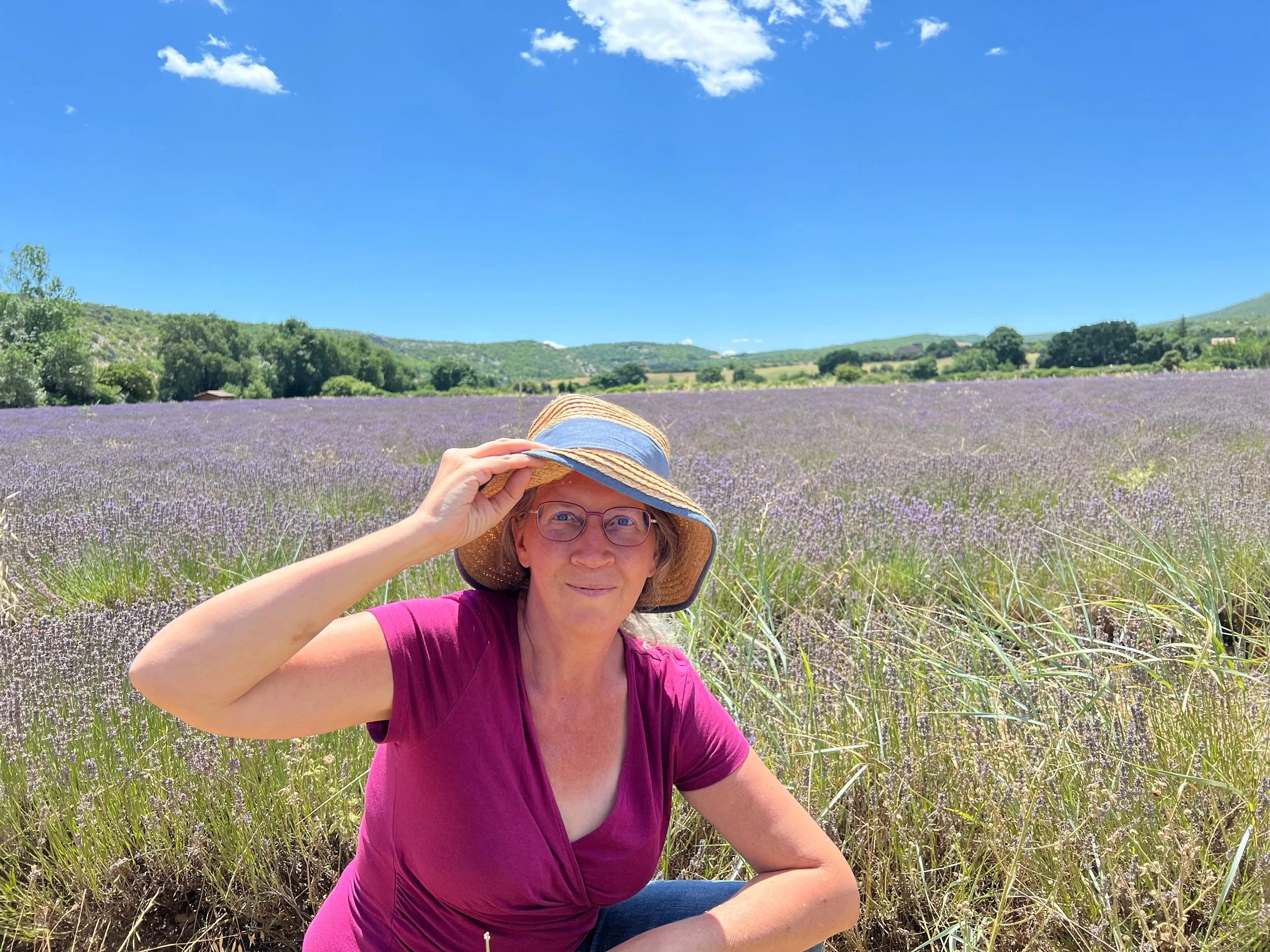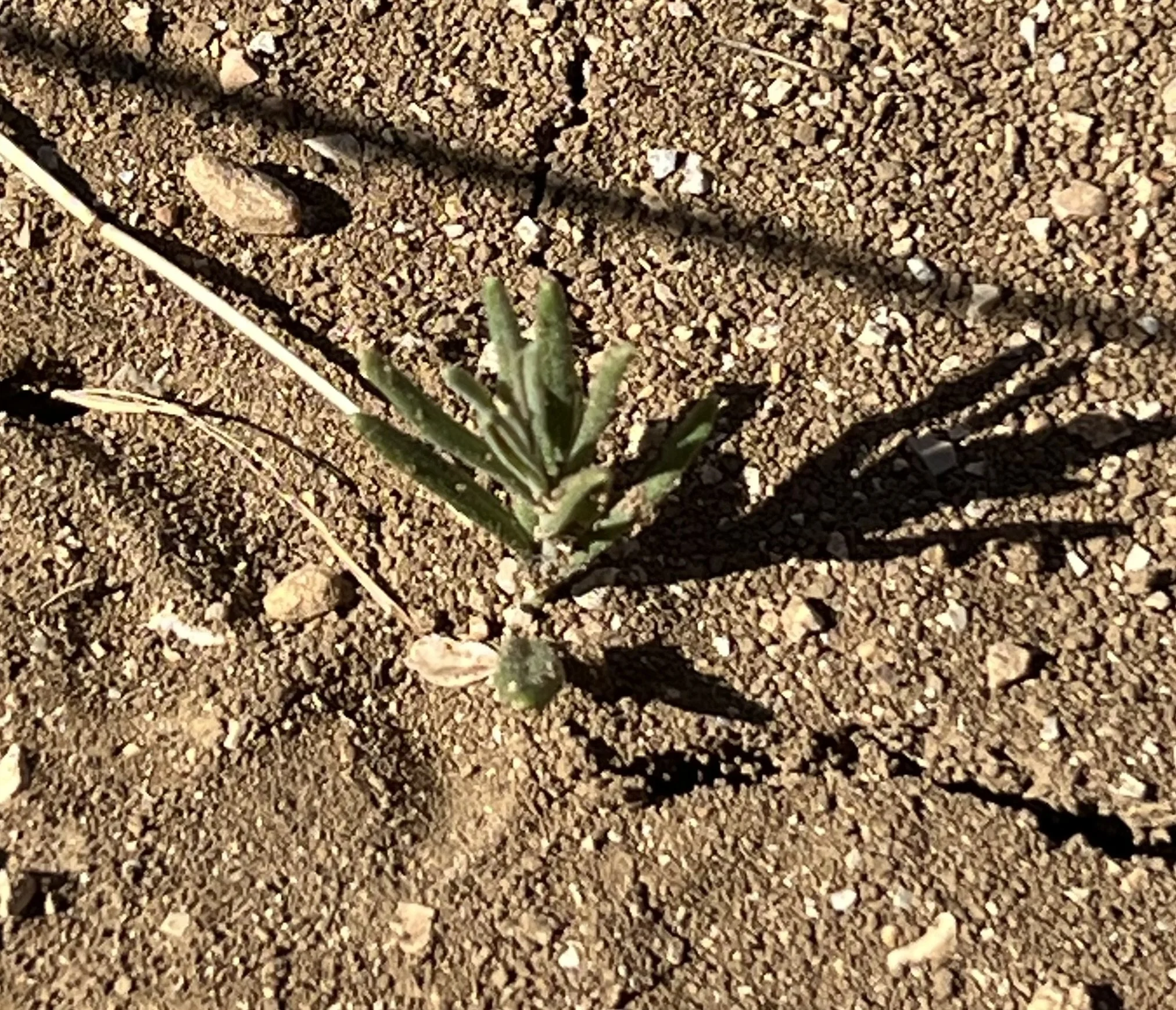Why growing lavender from seeds is so important for biodiversity and the continuation of our planet
Young Living grows the original Lavender plant, Lavandula Angustifolia, which is the same plant which is growing in the wild and has about 600 different constitutes.
Each plant is grown from the seed and is unique in colour, smell and quality. About 80% of lavender grown from seeds worldwide are from Young Living.
Picture: Claudia in the lavender field in Provence, France
18 years ago I joined Young Living because I experienced something I had never experienced before. I was lying on a massage table and was transported into a state of bliss when several essential oils were applied on my body. I ordered the raindrop kit, lavender, peppermint and frankincense essential oils.
These oils would change my life in unimaginable ways. I quit my job three years later to offer raindrops therapy and travelled around the globe to teach about the essential oils creating community and helping others to do the same.
Even during the darkest time of my life the oils were a constant companion never to be missed. The recent trip to Provence rekindled my passion to teach and share about these miracles in a bottles again.
Yes there are countless essential oil companies out there, but trust me none of them comes even close to Young Living.
I remember Gary Young telling us years ago during the Silver Retreat in St. Maries, Idaho in 2012 (a fully paid company trip to celebrate the rank of Silver as a Young Living distributor) that if you don’t grow it, you will NOT have it. He always emphasised on the importance of growing plants from seeds.
Young Living grows the original Lavender plant, Lavandula Angustifolia, which is the same plant which is growing in the wild
Growing Lavender from seeds versus cloning the plant
Traditionally lavender in the Provence is grown for the perfume industry and although it is widely called lavender it is actually lavandin and not lavender. The majority of it comes from cloning the plant, e.g. a part of the plant is cut, put in water and once it sprouts roots it will be planted. In this instance you are not making a new plant, you are growing the same plant, you clone it. In order to clone a plant, you need to make a selection and you need to choose which one to clone. Naturally the farmer will choose the plant with the most yield. Lavandin is such a cloned plant. For more details about the difference of True Lavender and Lavandin see my next blogpost.
85% of the oils is in the flowers and 15% in the stem. So it will definitely make sense to choose a plant which has the most flowers because more flowers means more oil. In order the get the most yield, farmers will chop it up and make an entire field out of the same plant. The quality is not known, just the yield is known. This is the most common practise nowadays and used by 98% of lavender/lavandin growers. In fact most plants are clones, e.g. the cavendish banana is a clone and each banana is identical to the next.
If there are diseases in the plant, all the fields will get the disease and the plants will disappear, which will post a disastrous economy for future farmer with no new gene to adapt for future condition. Another concern is these clones need fertiliser and pesticides in order to survive 40 to 50 years. Fertiliser and pesticides are necessary because of the soil depletion over the years.
Young Living is entirely different as it grows the true lavender plant (lavandula angustifolia) form the seeds. This is extremely important and shortly you will understand why.
A tiny Lavandula Angustifolia plant grown from a seed
It will take about 3 years until lavender can be harvested
In fact when I mentioned the Young Living Lavender farm, it is actually not one farm, but the corporation of more then 50 farmers over 3500 acres.
Growing plants from seeds ensures the highest quality of the plant and oil. Every single plant is different as it adapts to different weather, soil conditions and other variable factors. There are about 12,000 different plants in one hectar. The versatility gives a quality that a clone can never achieve.
Young Living grows lavender for 10 years in the same field and the older the plant the more interesting the seeds. They collect the seeds when they need them. In that case the lavender is not harvested in July, but the plants stays until August when the seeds can be collected.
Due to environmental condition e.g. draught not all plants, although highly adaptable will survive. Naturally there will be no seeds from the plants which do not survive. This is a natural evolution for the plant to happen.
There is no evolution from a clone. All plants are the same. This is actually wanted as most lavender farmers grow for the perfume industry and the perfume industry wants the oil to smell exactly the same. The perfume industry is also only interested in the smell and not in the quality and therapeutic effects of the oils.
Young Living essential oils contain 4,000,000 different (yes 4 million, its not a typo) plants. Because the oils are blended from different fields. Almost 80% of lavender grown from seeds worldwide are from Young Living. There are a few smaller producers who also produce lavender from seeds, but they are very rare.
You might be asking yourself why are there not more farmers growing lavender from seeds? Growing clones have 3 to 5 times more yield (considering same field size, cost, work etc). The farmers needs to make profit and so he will naturally choose to grow clones.
Crop-rotation and biodiversity Research to support local farmers and communities
On our first day in the Provence we had the opportunity to visit the Young Living research fields where Young Living is experimenting with different plant rotation and growing methods to optimise the soil condition and longterm sustainability. This is something a single farmer can not afford, as they need to make an income. Once this new growing methods are successful the knowledge will be shared with the farmer to support them implementing more sustainable practices.
Young Living does not use any artificial fertiliser (only humous made from cow manure and plants) and no pesticides. In order for the soil not to deplete Lavender is only grown for 10 years (compared to 40 to 50 years for the cloned plants), it is then followed by 2 years of Einkorn and 3 years of oregano or other plants.
In the last couple of years Young Living experimented with planting x rows of lavender, x rows of oregano and x rows of einkorn etc. However this didn’t really work very well especially because there had been draughts. The oregano actually did grow well, but the lavender not so much.
At the moment Young Living has just started testing a different growing method that mimics the biodiversity of a forest. e.g. in a forest all the different plants and trees are mixed together instead of 3 rows of pine trees, 3 rows of beech etc. Part of this initiative is including planting olive trees to give shade. The planting of trees will also enable the farmers to earn more money as they can make an additional income from Olive oils. However the research is at the beginning stage and it will take approximately 10 years to see if this method is feasible.
As we wrapped up the first day, I reflect on my journey to the Provence to celebrate my 18 years as a Brand Partner with Young Living. It reminded me of the reason why I joined Young Living in the first place: for exceptional essential oils that truly work and to be part of a greater mission protecting nature and making a positive impact on our planet.
Would you love to hear more stories about Lavender and Young Living seed to seal commitment?
Join us for more insights on Wednesday, 23 July at 7.30pm Singapore time/1.30pm Germany time!
https://us06web.zoom.us/meeting/register/Dgwu1s6HSpmZfHLF6Dfb5w


